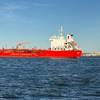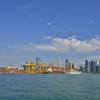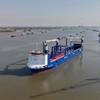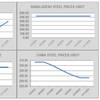DNV GL Revisits Offshore Oil & Gas Risks
In the first issue its 'Perspectives' online magazine DNV GL’s Graham Bennett points out that the Macondo incident has cast a spotlight on well control standards and the need for more consistency in training.
Offshore oil and gas activities are not, by nature, inherently safe. They involve handling large amounts of pressurised hydrocarbons and other produced fluids and gases. The industry has been improving its process safety performance ever since the Piper Alpha platform incident, in which 167 men died in 1988, but it still has far to go in effectively managing major hazard risks.
Many elements behind the fire, fatalities and massive oil spill from the Macondo field in the Gulf of Mexico in 2010 had been seen before. Decision-making for Transocean’s Deepwater Horizon rig was excessively compartmentalised while drilling the Macondo well. Individuals made critical decisions without fully appreciating how essential these choices were for well integrity and worker safety. During the immediate postblowout response, many rig systems and processes failed to respond correctly as the incident escalated.
Industry has much to learn
DNV GL believes the industry can still learn much from Macondo. There have been too many major hazard incidents over the last 25 years: Macondo, Montara and Piper Alpha offshore, and Texas City onshore. Lessons are not being embedded into a risk management culture as much as we would like. Decisions needed for long-term management of risks are often replaced by shorter-term decisions on profitability.
The industry has done well to improve occupational safety performance. This contrasts with a lower profile for, and reporting of, process safety issues. Compared with occupational safety, understanding of process safety differs within companies.
Operations and maintenance people dealing regularly with incidents understand them well and know the importance of barriers to prevent them. But the people who routinely make decisions on investments in training and competence have less experience about contributors to major hazard issues. When we talk to senior management about the potential for, or the impact of, a major hazard event such as fire, blowout or gas explosion, they have not all had that experience. This makes it harder for them to picture and understand the situation.
Safety culture starts in the boardroom. Companies that pioneer in this area show greater board level leadership on major hazard issues, which is to be commended. Many oil and gas companies now send senior management teams for hazard awareness training at DNV GL’s Spadeadam Test Site to see, hear, and feel the potential impact of a major incident. We routinely work with our customers to increase understanding of key levers for success in improving process safety performance.
Regulatory responses
Regulatory responses to process safety vary globally. North Sea nations such as the UK, Norway, Denmark and the Netherlands deal with operations in relatively harsh environments. They have a good understanding of process safety and have been much quicker to react to lessons from Piper Alpha. Consequently, a risk-based approach to legislation characterises the North Sea Basin, and is seen today as a global best practice.
Australia adopted a risk-based approach several years ago. It has worked well. The US regime, for reasons including the legislative environment, has been more focused on prescriptive rules and legislation.
Prescriptive regimes are relatively easy to implement and monitor, but less effective at preventing new types of accidents that may happen in the future and are not anticipated by existing rules.
The risk-based approach, which has encouraged many operators to go further than local regulations require, has reduced risks while controlling costs. Some countries in Asia Pacific, Africa and the Middle East are yet to develop this approach. They are still formulating regulatory regimes as their hydrocarbon industries develop. However, major operators that have moved into these areas have introduced best practices from the North Sea.
We believe that the most effective offshore safety regime deploys performance-based regulation requiring major hazard reports, including risk assessments and independent verification, and is supplemented by required or recommended specific prescriptive regulation for selected areas. This view is supported by the new European Union Offshore Safety Directive (Directive 2013/30/EU).
Source: DNV GL Perspectives no 1 2014
(Graham Bennett is DNV GL’s VP and business development manager for UK and Southern Africa.)






